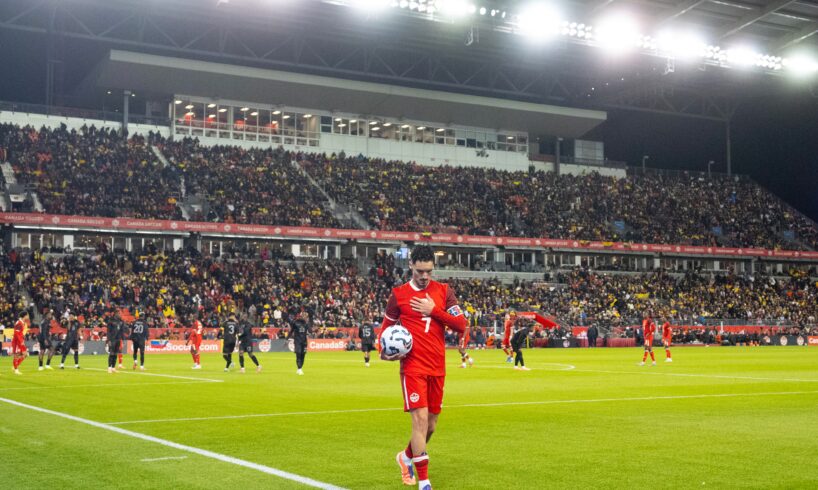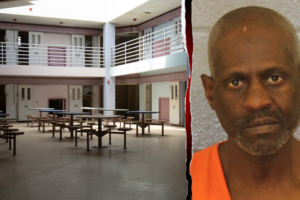
Open this photo in gallery:
Canada’s Stephen Eustaquio prepares to take a corner kick during a match against Ecuador at BMO Field in Toronto on Thursday.Chris Young/The Canadian Press
An exhibition game between potential opponents at next year’s FIFA World Cup had fans complaining about missing the start of the sold-out match due to long lines at Toronto’s BMO Field, which is undergoing a massive expansion to play host to next summer’s tournament.
Fans took to social media to complain about long delays getting into the venue, including after the game had already started, and snarled traffic in and around the stadium, which is located west of the downtown core near Exhibition Place.
The City of Toronto, which is spending $123-million on stadium upgrades for the coming tournament, acknowledged “significant congestion” in the area, which spokesperson Kate Lear attributed to “an unusually high concentration of overlapping special events,” alongside rush-hour traffic and construction.
Lear said the city activated its congestion-management plan, including deploying additional off-duty police officers and traffic agents.
She added that the city is working with a range of agencies to address congestion ahead of the World Cup.
Cathal Kelly: Outrageous World Cup parking costs are the latest price to pay to be seen
“Toronto’s ability to host large-scale events remains strong,” she wrote.
Maple Leaf Sports and Entertainment spokesman Dave Haggith issued a statement Friday emphasizing that these delays are only temporary and will not be a factor during the World Cup. He pointed to two main gates being closed for the construction and a number of other factors, including train delays dropping lots of fans off late, as well as parking issues related to events at nearby Exhibition Place
Sharon Bollenbach, executive director of its World Cup secretariat, said in a statement that the City of Toronto regularly reviews events of all sizes “to identify lessons learned and apply them” as it prepares to welcome tens of thousands of soccer fans next year.
The city is also developing its plans to funnel the vast majority of these fans to and from the venue via transit, her statement said.
Andrew Reis, a 30-year-old hospital worker, arrived via train from Hamilton and says he quickly recognized the strategy for funnelling the thousands of fans into the stadium wasn’t working. Reis, who attended with his wife and her mother, who are both Ecuadorean, was one of dozens of people grousing about the lengthy delays at Thursday evening’s game and wondering aloud if it is a sign of trouble to come next year, when nearly 17,000 temporary seats will be added to the waterfront stadium.
Cathal Kelly: MLS flips its schedule, pushing Canadian teams out in the cold
He says the trio arrived at the stadium around 7:40 p.m., 10 minutes after the game was supposed to have started. They found more than 100 people also waiting at the entrance, then tried two other entrances and were greeted by queues of a similar size.
After waiting 10 to 15 minutes to get their tickets scanned, it took another 20 minutes or so to finally get seated in their spots in the upper stands because of the crowds, he said. At the end of the game, it took another 20 minutes to get down from the stands because thousands of fans were streamed down a single staircase, he said.
Now, he says, he is worried that adding thousands of more seats to the existing footprint of the stadium will mean long waits at the World Cup.
“I know they have seven months to go, but – even with the addition – I don’t know how to stadium is supposed to fit more than what it did yesterday,” he said.





